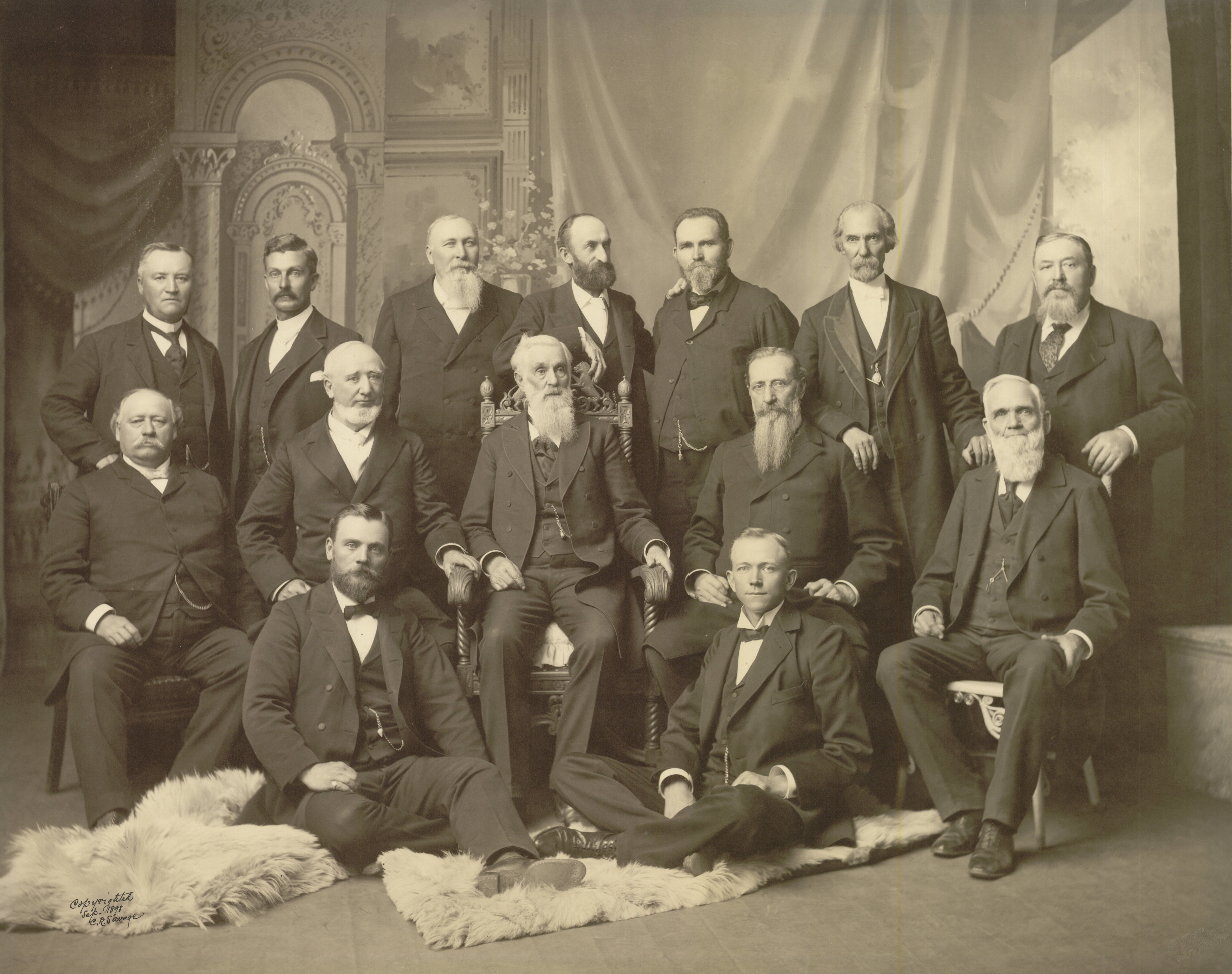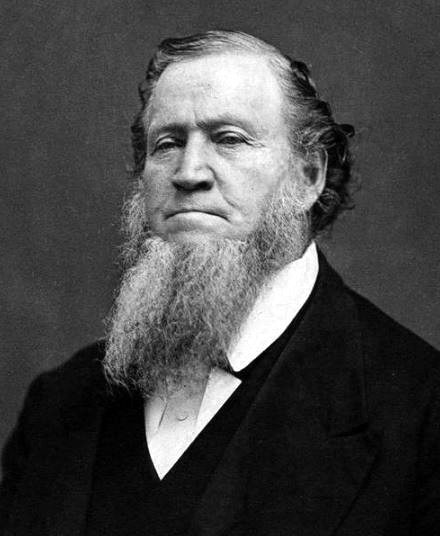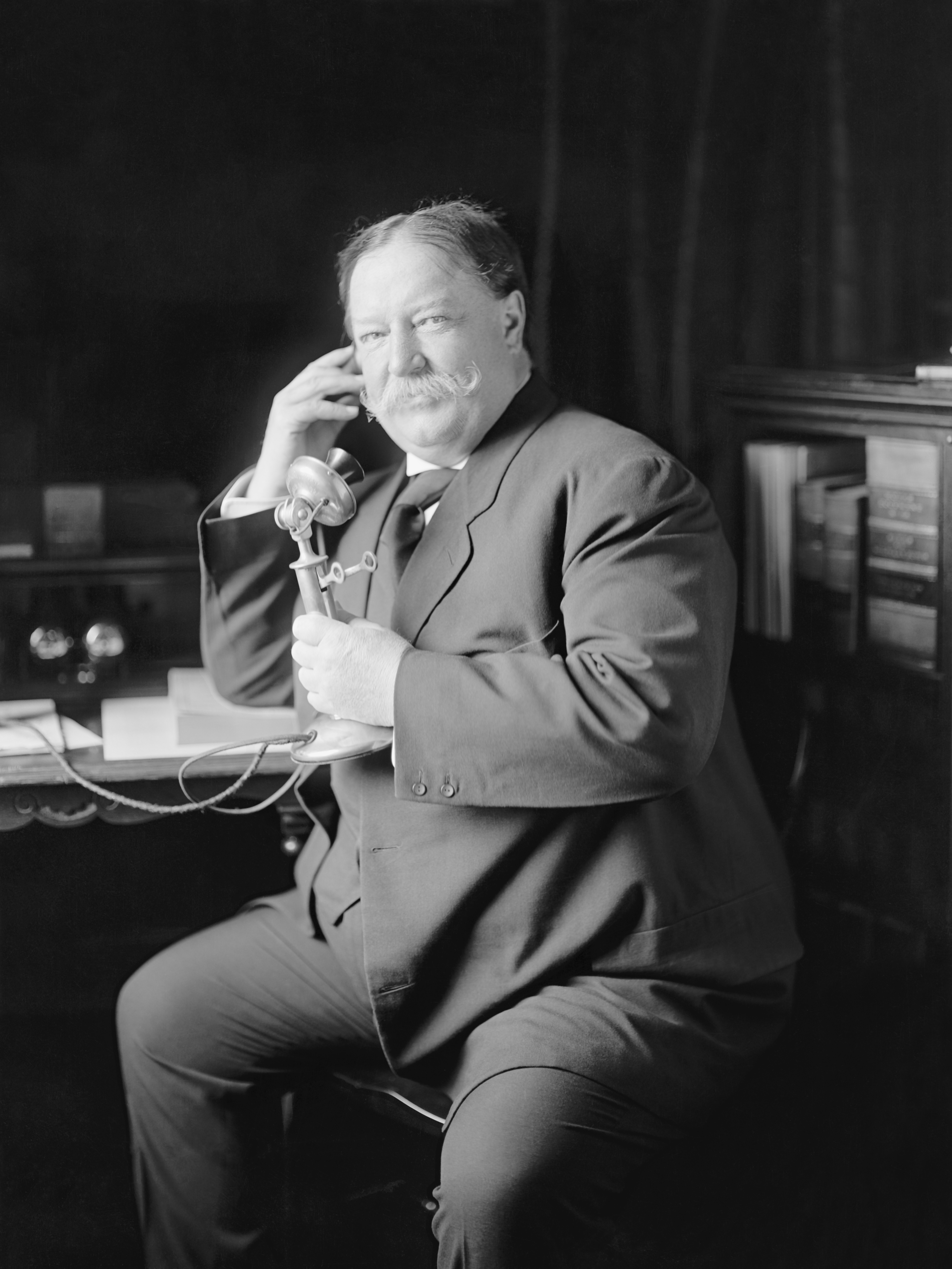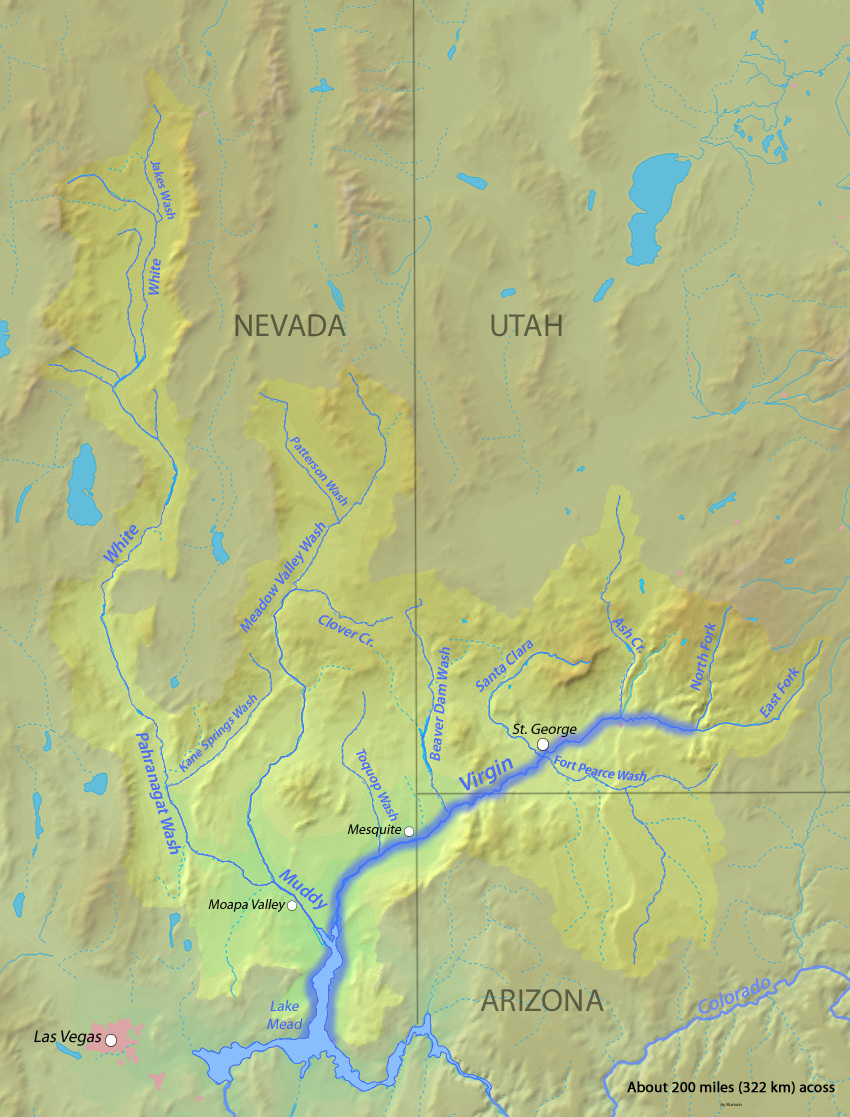|
1912 United States Presidential Election In Utah
The 1912 United States presidential election in Utah was held on November 5, 1912 as part of the 1912 United States presidential election. State voters chose four representatives, or electors to the Electoral College, who voted for president and vice president. After being overwhelmingly carried by William Jennings Bryan in its first presidential election from its statehood year of 1896, Utah was to vote Republican by increasing margins in the following three elections, with only Washington County in the Dixie region voting Democratic in 1904 and 1908. By 1909, there were just two Democrats in the state legislature – a number fewer than any other state except Michigan during the middle 1900s and 1920s. However, during William Howard Taft's presidency, his predecessor Theodore Roosevelt became bitterly opposed to his policies on foreign affairs and the opening of public lands to private concerns.Wahlquist, C. Austin‘The 1912 Presidential Election in Utah’(A Thesis Prese ... [...More Info...] [...Related Items...] OR: [Wikipedia] [Google] [Baidu] |
United States Presidential Election
The election of the president and the vice president of the United States is an indirect election in which citizens of the United States who are registered to vote in one of the fifty U.S. states or in Washington, D.C., cast ballots not directly for those offices, but instead for members of the Electoral College. These electors then cast direct votes, known as electoral votes, for president, and for vice president. The candidate who receives an absolute majority of electoral votes (at least 270 out of 538, since the Twenty-Third Amendment granted voting rights to citizens of D.C.) is then elected to that office. If no candidate receives an absolute majority of the votes for president, the House of Representatives elects the president; likewise if no one receives an absolute majority of the votes for vice president, then the Senate elects the vice president. In contrast to the presidential elections of many republics around the world (operating under either the presidential ... [...More Info...] [...Related Items...] OR: [Wikipedia] [Google] [Baidu] |
William Jennings Bryan
William Jennings Bryan (March 19, 1860 – July 26, 1925) was an American lawyer, orator and politician. Beginning in 1896, he emerged as a dominant force in the History of the Democratic Party (United States), Democratic Party, running three times as the party's nominee for President of the United States in the 1896 United States presidential election, 1896, 1900 United States presidential election, 1900, and the 1908 United States presidential election, 1908 elections. He served in the United States House of Representatives, House of Representatives from 1891 to 1895 and as the United States Secretary of State, Secretary of State under Woodrow Wilson. Because of his faith in the wisdom of the common people, Bryan was often called "The Great Commoner", and because of his rhetorical power and early notoriety, "The Boy Orator". Born and raised in Illinois, Bryan moved to Nebraska in the 1880s. He won election to the House of Representatives in the 1890 United States House ... [...More Info...] [...Related Items...] OR: [Wikipedia] [Google] [Baidu] |
1912 United States Presidential Election In Vermont
The 1912 United States presidential election in Vermont took place on November 5, 1912, as part of the 1912 United States presidential election which was held throughout all contemporary 48 states. Voters chose four representatives, or electors to the Electoral College, who voted for president and vice president. Vermont was won by the Republican nominees, incumbent President William Howard Taft from Ohio, and his running mate Vice President James S. Sherman from New York. Taft and Sherman defeated the Progressive Party candidates, former President Theodore Roosevelt from New York and his running mate California Governor Hiram Johnson, and the Democratic nominees, New Jersey Governor Woodrow Wilson and Indiana Governor Thomas R. Marshall. Taft won the state with a plurality of 37.13%, to Roosevelt's 35.22%, with Wilson in third place at 24.43%. Taft's victory margin over Roosevelt was 1.91%. Historically, Vermont was a bastion of liberal Northeastern Republicanism, and by ... [...More Info...] [...Related Items...] OR: [Wikipedia] [Google] [Baidu] |
Tariff
A tariff is a tax imposed by the government of a country or by a supranational union on imports or exports of goods. Besides being a source of revenue for the government, import duties can also be a form of regulation of foreign trade and policy that taxes foreign products to encourage or safeguard domestic industry. ''Protective tariffs'' are among the most widely used instruments of protectionism, along with import quotas and export quotas and other non-tariff barriers to trade. Tariffs can be fixed (a constant sum per unit of imported goods or a percentage of the price) or variable (the amount varies according to the price). Taxing imports means people are less likely to buy them as they become more expensive. The intention is that they buy local products instead, boosting their country's economy. Tariffs therefore provide an incentive to develop production and replace imports with domestic products. Tariffs are meant to reduce pressure from foreign competition and reduce th ... [...More Info...] [...Related Items...] OR: [Wikipedia] [Google] [Baidu] |
Western Historical Quarterly
The Western History Association (WHA), a 501(c)(3) non-profit organization, was founded in 1961 at Santa Fe, New Mexico by Ray Allen Billington et al. Included in the field of study are the American West and western Canada. The Western History Association was headquartered from 2012-2017 at the University of Alaska, Fairbanks. the WHA was hosted on the campus of the University of Nebraska at Omaha with the support of the Department of History, College of Arts and Sciences. History In 1964 WHA began publication at the University of Utah Press, with a full run of four issues, and then in 1965 contracted Sunset publishing to print the quarterly called ''Nebraska'', edited by A. R. Mortensen. The WHA's publications now include the ''Western Historical Quarterly'' and '' Montana: The Magazine of Western History.'' The association offers several annual and biennial prizes for essays and books, including the annual Caughey Western History Association Prize for the best book of the ... [...More Info...] [...Related Items...] OR: [Wikipedia] [Google] [Baidu] |
Reed Smoot
Reed Smoot (January 10, 1862February 9, 1941) was an American politician, businessman, and apostle of the Church of Jesus Christ of Latter-day Saints (LDS Church). First elected by the Utah State Legislature to the U.S. Senate in 1902, he served as a Republican senator from 1903 to 1933. From his time in the Senate, Smoot is primarily remembered as the co-sponsor of the 1930 Smoot–Hawley Tariff Act, which increased almost 900 American import duties. Criticized at the time as having "intensified nationalism all over the world" by Thomas Lamont of J.P. Morgan & Co., Smoot–Hawley is widely regarded as one of the catalysts for the worsening Great Depression. Smoot was a prominent leader of the LDS Church, chosen to serve as an apostle in the Quorum of the Twelve Apostles in 1900. His role in the LDS Church (together with rumors of a secret church policy continuing polygamy and a secret oath against the United States) led to a lengthy controversy of four years after he was elect ... [...More Info...] [...Related Items...] OR: [Wikipedia] [Google] [Baidu] |
Apostle (Latter Day Saints)
In the Latter Day Saint movement, an apostle is a "special witness of the name of Jesus Christ who is sent to teach the principles of salvation to others." In many Latter Day Saint churches, an apostle is a priesthood office of high authority within the church hierarchy. In many churches, apostles may be members of the Quorum of the Twelve and First Presidency of the church. In most Latter Day Saint churches, modern-day apostles are considered to have the same status and authority as the Biblical apostles. In the Latter Day Saint tradition, apostles and prophets are believed to be the foundation of the church, Jesus Christ himself being the chief cornerstone. The "Articles of Faith", written by Joseph Smith, mentions apostles: "We believe in the same organization that existed in the Primitive Church, namely, apostles, prophets, pastors, teachers, evangelists, and so forth." History Joseph Smith and Oliver Cowdery were both designated apostles by 1830. The founding articles a ... [...More Info...] [...Related Items...] OR: [Wikipedia] [Google] [Baidu] |
Brigham Young University
Brigham Young University (BYU, sometimes referred to colloquially as The Y) is a private research university in Provo, Utah. It was founded in 1875 by religious leader Brigham Young and is sponsored by the Church of Jesus Christ of Latter-day Saints (LDS Church). BYU offers a variety of academic programs including those in the liberal arts, engineering, agriculture, management, physical and mathematical sciences, nursing, and law. It has 186 undergraduate majors, 64 master's programs, and 26 doctoral programs. It is broadly organized into 11 colleges or schools at its main Provo campus, with some colleges and divisions defining their own admission standards. The university also administers two satellite campuses, one in Jerusalem and one in Salt Lake City, while its parent organization the Church Educational System (CES) sponsors sister schools in Hawaii and Idaho. The university is accredited by the Northwest Commission on Colleges and Universities. Almost all BYU students ... [...More Info...] [...Related Items...] OR: [Wikipedia] [Google] [Baidu] |
Presidency Of William Howard Taft
The presidency of William Howard Taft began on March 4, 1909, when William Howard Taft was inaugurated as 27th president of the United States, and ended on March 4, 1913. Taft, was a Republican from Ohio. The protégé and chosen successor of President Theodore Roosevelt, he took office after easily defeating Democrat William Jennings Bryan in the 1908 presidential election. His presidency ended with his defeat in the 1912 election by Democrat Woodrow Wilson. Taft sought to lower tariffs--a tax on imports--then a major source of governmental income. However he was out-maneuvered. The new Payne–Aldrich Tariff Act of 1909 raised rates when most people expected reductions. Taft expanded Roosevelt's efforts to break up trusts, launching legal cases against U.S. Steel and other very large companies. Taft made six appointments to the United States Supreme Court, more than all but two other presidents. In foreign affairs, Taft focused on China and Japan, and repeatedly intervened t ... [...More Info...] [...Related Items...] OR: [Wikipedia] [Google] [Baidu] |
Political Party Strength In Michigan
The tables below indicate the political party affiliation of elected officials in the U.S. State of Michigan from statehood through the results of the November 2022 elections. Officials listed include: List of governors of Michigan, Governors, List of lieutenant governors of Michigan, Lieutenant Governors, Michigan Secretary of State, Secretaries of State, Michigan Attorney General, Attorneys General/Michigan State Treasurer, State Treasurers. The tables also indicate the historical party composition in the Michigan Senate, State Senate, Michigan House of Representatives, State House of Representatives, the names and party affiliations of List of United States senators from Michigan, Michigan's U.S. Senators, and the party composition of Michigan's List of United States representatives from Michigan, delegations to the U.S. House of Representatives. For years in which a United States presidential election, presidential election was held, the tables show which party's nominees recei ... [...More Info...] [...Related Items...] OR: [Wikipedia] [Google] [Baidu] |
Dixie (Utah)
Utah's Dixie is the nickname for the populated, lower-elevation area of south-central Washington County in the southwestern portion of the U.S. state of Utah. Its winter climate is very mild when compared to the rest of Utah, and typical of the Mojave Desert, in which it lies. Situated south of the Black Ridge and west of the Hurricane Cliffs, at the northeastern edge of the Mojave Desert, it was originally settled by Southern Paiutes. Following the Mexican–American War, it became part of the United States and was inhabited by members of the Church of Jesus Christ of Latter-day Saints in 1854 as part of Brigham Young's efforts to establish an Indian mission in the region. During the later 1850s, the settlers began growing cotton and other temperate cash crops in the area of Santa Clara, Utah. The Paiute population was largely displaced and also declined due to diseases brought by the new settlers. The Cotton Mission The area was first referred to as the "Cotton Mission", ... [...More Info...] [...Related Items...] OR: [Wikipedia] [Google] [Baidu] |
1908 United States Presidential Election In Utah
The 1908 United States presidential election in Utah was held on November 3, 1908, throughout all forty-six contemporary states as part of the 1908 United States presidential election. State voters chose three representatives, or electors to the Electoral College, who voted for president and vice president. This was the last election when Utah had the minimum three electoral votes as it would gain a second congressional district after the 1910 Census. Although Democrat/Populist Bryan had carried Utah in its debut presidential election by a five-to-one margin, the Republican Party – ditching ancestral hostility to the state's dominant Mormon religion – was soon able to take control of the state, despite a threat from the anti-Mormon "American Party" in urban areas with sizeable non-Mormon ("Gentile") populations.Wahlquist, C. Austin'The 1912 Presidential Election in Utah'(A Thesis Presented to the Department of History, Brigham Young University, Provo, Utah) In its third e ... [...More Info...] [...Related Items...] OR: [Wikipedia] [Google] [Baidu] |


.png)




